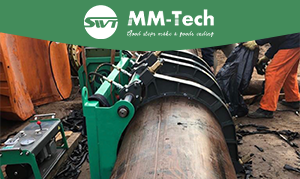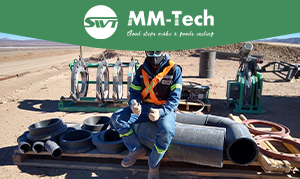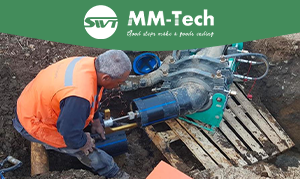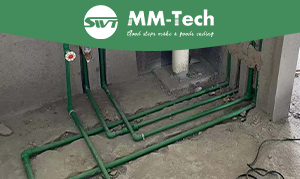A socket fusion tool helps connect pipes without gaps. It heats and joins strong polyethylene pipes for tight bonds. This process, called socket fusion, is key for geothermal pipes. Tight joints stop leaks, making systems work better and last longer.
A socket fusion tool ensures accuracy and lowers the chance of joint issues.
Key Takeaways
-
A socket fusion tool helps make strong, leak-proof pipe connections. Heating and aligning correctly are key for lasting results.
-
Wear safety gear like heat-safe gloves and a face shield. This keeps you safe from burns and harmful fumes while working.
-
Clean and check your socket fusion tool often. This helps it work well and last longer. Good care avoids expensive errors.
Tools and Materials for Using a Socket Fusion Tool
Essential Tools and Equipment
To install geothermal pipes, you need the right tools. Socket fusion tools are important for joining pipes securely. These tools heat pipe ends to about 500°F to connect them tightly. Special equipment is needed to create strong bonds that handle pressure and temperature changes.
Here’s a list of must-have tools:
-
Socket fusion tool: Heats and joins pipe ends together.
-
Pipe cutter: Makes clean cuts for better pipe fitting.
-
Alignment clamps: Holds pipes steady while fusing.
-
Temperature gauge: Checks heating plate for steady heat.
-
Cleaning supplies: Cleans pipes for smooth connections.
Socket fusion is a common way to join HDPE pipes for geothermal systems. Contractors often use special tools and training to ensure good results.
Tip: Always inspect your tools before starting. Broken tools can ruin pipe connections.
Safety Gear for Geothermal Pipe Installation
Safety gear is very important when installing geothermal pipes. Socket fusion tools get very hot, and handling melted pipes can be dangerous. Wearing safety gear keeps you safe while working.
| Type of Safety Gear | Percentage of Daily Use |
|---|---|
| Specialized Protective Equipment | 33% |
| Common Protective Equipment | 84% |
| Exposed to Hazardous Conditions | 90% |
Wear heat-proof gloves to handle hot pipes and a face shield to protect your face. Work in a space with good airflow to avoid breathing in fumes from the fusion process.
Note: Safety gear is a must-have for every geothermal pipe project.
MM-Tech Products: Butt Fusion Machine and ppr welding machine
MM-Tech makes great tools for welding thermoplastic pipes. Their butt fusion and ppr welding machines are perfect for geothermal projects.
The MM-Tech V Series Manual Hydraulic Machine is great for 90° elbow pipe joints. It gives precise control for strong, long-lasting connections. Its Teflon-coated heating plate stops material from sticking, making it easy to clean.
The Digital Socket Fusion Machine ZRJQ-40T works well for smaller pipes. Its digital controls let you adjust heat for different materials, ensuring good results. The machine’s strong nylon handle and durable sockets make it reliable for pipe work.
Both machines come with warranties and certifications, making them trusted by contractors everywhere.
Tip: Use high-quality tools like MM-Tech products to save time and money.
Step-by-Step Installation Guide for Geothermal Pipes
Getting the Workspace and Tools Ready
Before starting, clean your workspace and gather tools. A tidy area helps avoid mistakes and makes work easier. Check your socket fusion tool for damage or dirt. Broken tools can ruin pipe joints.
Measure and cut pipes to the needed size using a pipe cutter. Make sure cuts are straight and smooth. Rough edges can weaken the joint. After cutting, clean the pipe ends and fittings with alcohol-based cleaner. This removes dirt and grease that could mess up the fusion.
Tip: Measure twice before cutting to save materials.
Heating the Socket Fusion Tool
Heating the tool properly is very important. Plug in the socket fusion tool and set it to about 500°F. Wait until it’s fully heated. Most tools have a light to show when they’re ready.
When the tool is hot, place the pipe and fitting into the sockets. They should fit snugly but not too tight. Heating time depends on pipe size. For example, a 3/4″ pipe needs 12-14 seconds, while a 2″ pipe takes 22-26 seconds. Use the table below for more details:
| Pipe Size | Heating Time (s) | Cooling Time (s) |
|---|---|---|
| 3/4″ IPS | 12 – 14 | 30 |
| 1″ IPS | 14 – 16 | 30 |
| 1-1/4″ IPS | 18 – 20 | 60 |
| 1-1/2″ IPS | 18 – 20 | 60 |
| 2″ IPS | 22 – 26 | 60 |
Note: Too much heat can damage the pipe. Not enough heat makes weak joints. Follow the heating times carefully.
Joining HDPE Pipes Correctly
After heating, take the pipe and fitting out of the tool. Push them together firmly until they meet the marked depth. Do not twist or turn them, as this can weaken the joint.
Hold them steady for a few seconds to keep them aligned. Proper alignment is key for a strong connection. Misaligned joints can cause leaks and problems later.
Pro Tip: Use clamps to hold pipes steady while fusing.
Cooling and Checking the Joint
Let the joint cool naturally for the right amount of time. For example, a 3/4″ pipe needs 30 seconds, while a 2″ pipe needs 60 seconds. Don’t move or press the joint while it cools, as this can weaken it.
After cooling, check the joint for gaps or uneven spots. A good joint will have a smooth bead around it. If you see problems, you may need to redo the fusion.
Reminder: Test the system after installation to check for leaks or weak spots.
Safety Tips and Common Mistakes
Practical Safety Measures
Safety is very important when using socket fusion tools. Wear heat-proof gloves to keep your hands safe from burns. Use a face shield or goggles to protect your eyes from splashes or flying debris. Always work in a space with good airflow to avoid breathing in harmful fumes.
Keep your workspace neat to prevent accidents. Put tools and pipes in their proper places to avoid tripping. Before starting, check that your socket fusion tool works properly. Broken tools can cause bad joints or injuries.
Tip: Never leave a hot tool alone. It could start a fire or cause burns.
Avoiding Overheating and Misalignment
Too much heat can damage pipes, and too little heat makes weak joints. Follow the heating times for each pipe size carefully. Use a timer to get the timing right. Misaligned pipes are another common problem. They can cause leaks and make the system fail.
To fix this, use clamps to hold pipes steady while joining them. Line up the pipe and fitting carefully before pushing them together. After joining, don’t twist or move the connection.
Pro Tip: Check the joint after fusing to make sure it’s aligned and has a smooth bead.
Ensuring Proper Cooling for Durable Joints
Cooling is an important part of the fusion process. Let the joint cool naturally without touching or moving it. If you rush, the bond might not be strong. Follow the cooling times for the pipe size you’re using.
Once cooled, check the joint for gaps, uneven spots, or weak areas. A good joint will look smooth and feel strong. If there’s a problem, redo the fusion to make it better.
Reminder: Test the system after you finish to find leaks or weak spots early.
Maintenance of the Socket Fusion Tool
Cleaning and Storing the Tool
Clean your socket fusion tool after every use to keep it working well. Use a soft cloth and mild cleaner to wipe off dirt and residue. Do not use rough materials, as they can scratch the tool.
Follow these storage tips to protect your tool:
-
Keep it in a cool, dry place to prevent heat damage.
-
Place it on a raised surface to keep it away from moisture.
-
Do not stack heavy items on it to avoid breaking it.
Tip: Clean and store your tool properly to make it last longer.
Regular Inspection for Longevity
Check your socket fusion tool often to spot problems early. Look for cracks, wear, or leaks in the fittings. Inspect the heating plate for damage or signs of overheating. Make sure all parts are clean and tightly connected.
Here are some inspection tips:
-
Don’t use too much force on the fittings.
-
Keep the tool away from extreme heat or cold when not in use.
-
Test the tool to ensure it heats evenly before starting work.
Reminder: A quick check before using the tool can save time and avoid mistakes.
MM-Tech’s Commitment to Quality Tools
MM-Tech makes strong and reliable tools for pipe work. Their Digital Socket Fusion Machine ZRJQ-40T is built with durable materials and smart technology. The Teflon-coated heating plates are easy to clean and prevent sticking. These tools are made to handle frequent use without losing performance.
MM-Tech also offers warranties for their products, so you can trust their quality. Their tools are designed to give great results and last a long time.
Pro Tip: Using high-quality tools like MM-Tech products means less maintenance and better results.
To use a socket fusion tool, prepare your workspace first. Heat the tool carefully and join pipes correctly. Let the joint cool naturally for strong, leak-free connections. Tools like MM-Tech’s Digital Socket Fusion Machine ZRJQ-40T make the job easier and give great results.
Reminder: Good tools and careful work create reliable geothermal systems.
FAQ
What temperature works best for socket fusion?
The best temperature is about 500°F. This melts the pipe and fitting well, creating a strong, leak-free joint.
Tip: Use a temperature gauge to keep the heat steady.
How can weak joints be prevented during fusion?
Clean pipe ends carefully, heat them evenly, and align them properly. Do not twist or move the joint while it cools.
Are MM-Tech tools suitable for different pipe sizes?
Yes, MM-Tech tools like the Digital Socket Fusion Machine ZRJQ-40T work with many pipe sizes. They are flexible for geothermal pipe projects.
Reminder: Always check the tool’s details to ensure it fits your needs.



















